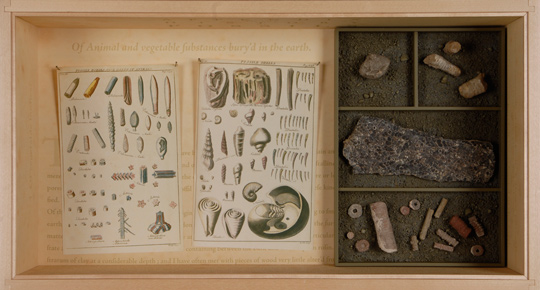The dark gray slab of stone seen on the right of this drawer contains the bodies of small animals including crinoids and turitella. Beginning in the seventeenth century, British collectors became fascinated with these and other “fossil stones” found throughout England. For aristocratic country houses, limestone containing fossils was cut, polished, and used for windowsills, stair railings, and other decorative stone work. By the mid eighteenth century, this fashion for fossil stone imagery was copied by a few potters who painted the patterns onto teapots.
Images taken from “Appendix to the History of Fossils: of Animal and Vegetable Substances Bury’d in the Earth”
in John Hill, A General Natural History
London, 1748–52.

